blockhouse on:
[Wikipedia]
[Google]
[Amazon]

 A blockhouse is a small fortification, usually consisting of one or more rooms with
A blockhouse is a small fortification, usually consisting of one or more rooms with
 Early blockhouses were designed solely to protect a particular area by the use of artillery, and they had accommodation only for the short-term use of the garrison. The first known example is the
Early blockhouses were designed solely to protect a particular area by the use of artillery, and they had accommodation only for the short-term use of the garrison. The first known example is the
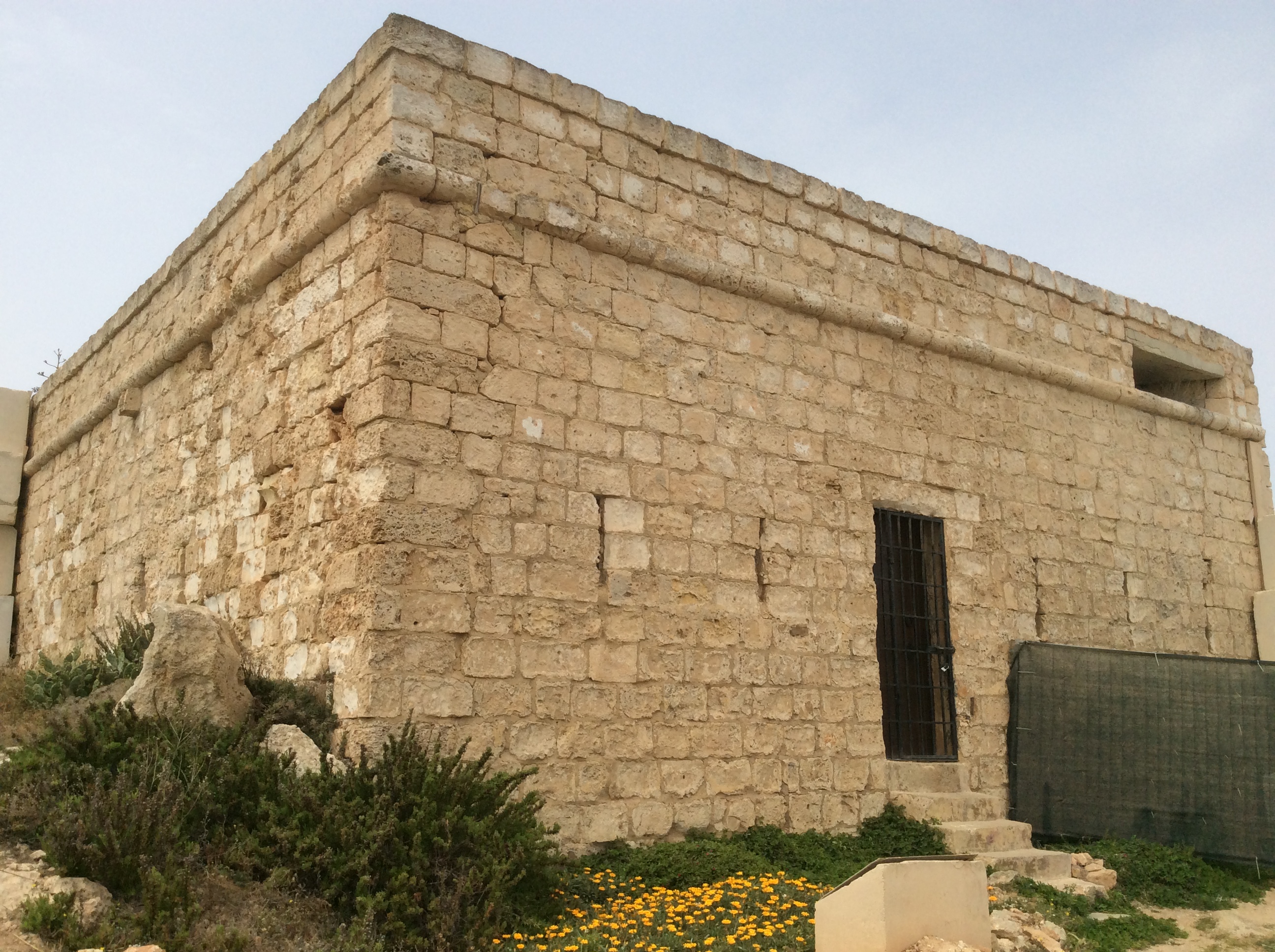 Blockhouses were an ubiquitous feature in Malta's coastal fortifications built in the 18th century by the
Blockhouses were an ubiquitous feature in Malta's coastal fortifications built in the 18th century by the
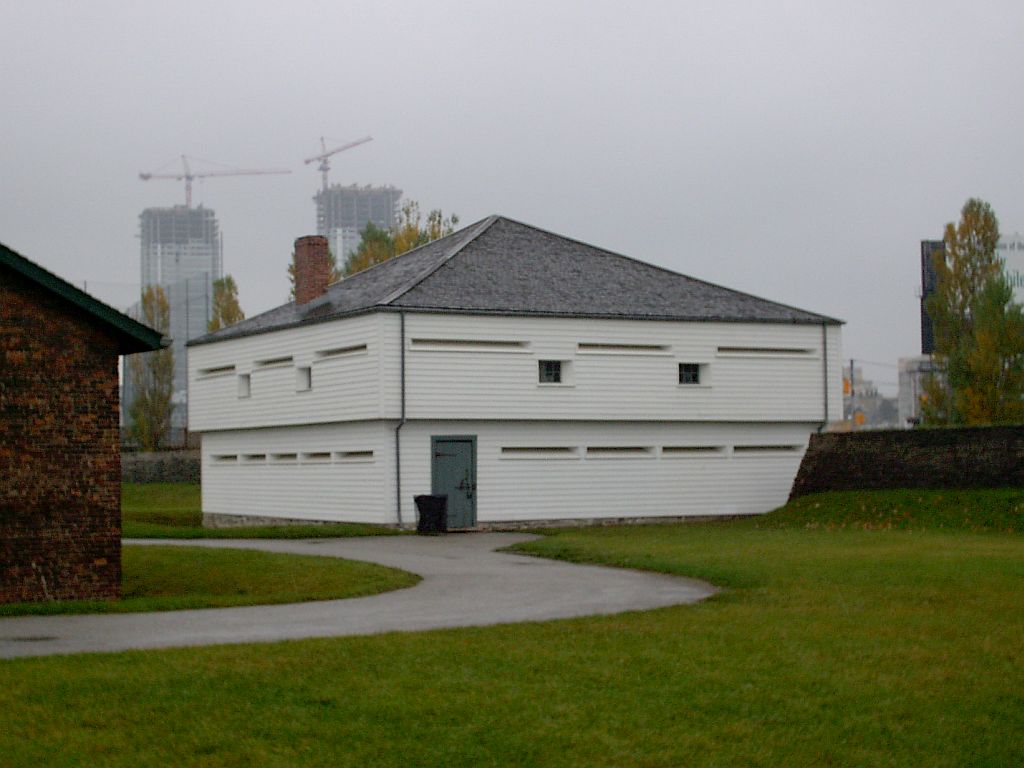 Blockhouses were normally entered via a sturdy, barred door at ground level. Most blockhouses were roughly square in plan, but some of the more elaborate ones were hexagonal or
Blockhouses were normally entered via a sturdy, barred door at ground level. Most blockhouses were roughly square in plan, but some of the more elaborate ones were hexagonal or
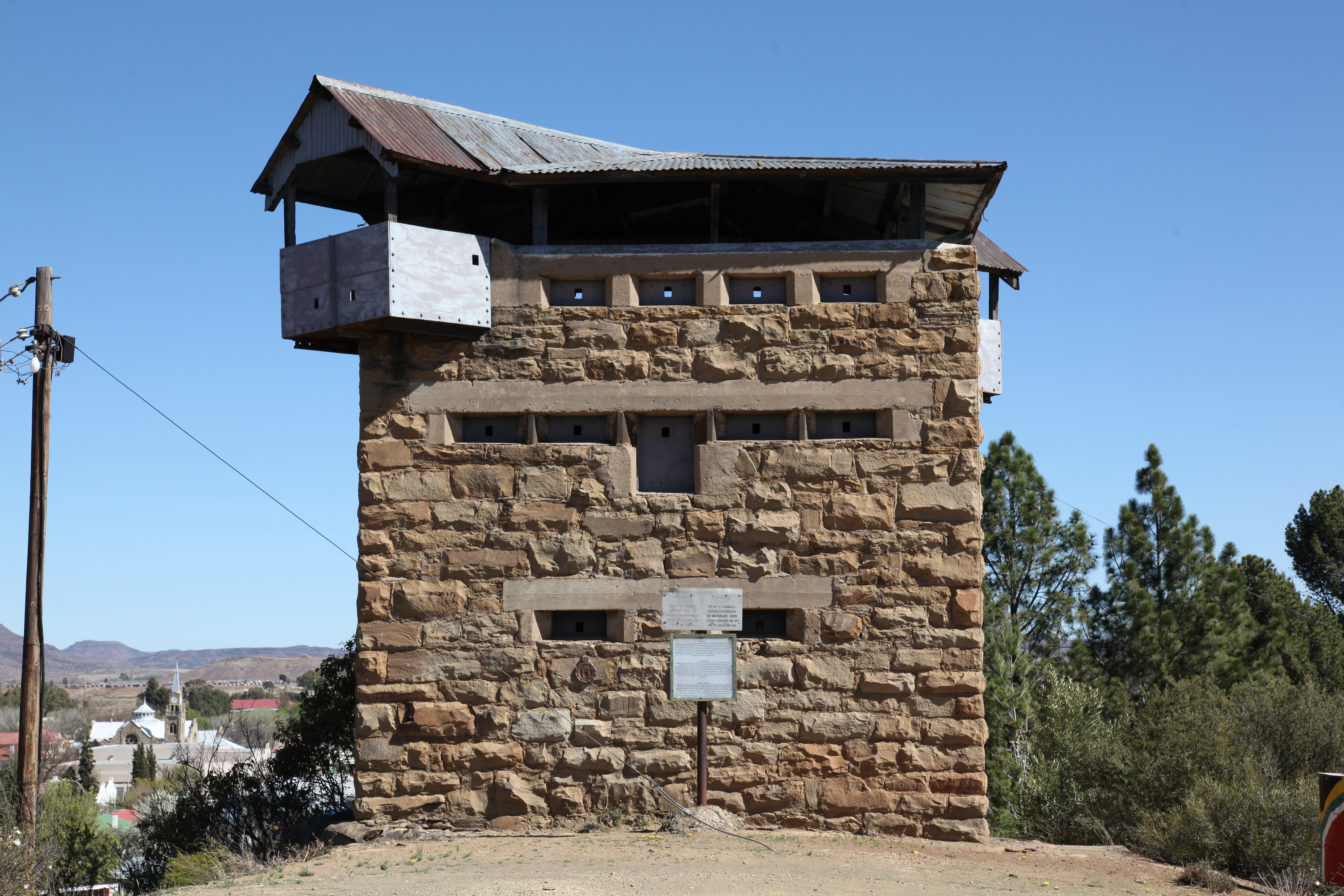 During the Second Boer War the British forces built a large number of fortifications in South Africa. Around 441 were solid masonry blockhouses, many of which stand today. Different designs were used in the construction of these blockhouses, but most were either two or three story structures built using locally quarried stone.
However the vast scale of British strategy led the British to develop cheaper, double-skinned corrugated iron structures. These could be prefabricated, delivered to site by armoured train, and then have locally sourced rocks or rubble packed inside the double skin to provide improved protection.
A circular design developed by Major Rice in February 1901 had good all round visibility, and the lack of corners did away with the need for a substructure. Failure due to wood rot and splintering when hit by bullets or shrapnel were eliminated. The steel door to the blockhouse was sheltered by another piece of corrugated iron. The Major Rice blockhouse could be erected in six hours by six trained men. With the change from square gabled roofs to a circular design, they were given the nickname "Pepperpot blockhouse". With mass production the cost to build a blockhouse dropped down to £16, compared to several hundred pounds for masonry ones.
These blockhouses played a vital role in the protection of the railway lines and bridges that were key to the British military supply lines.
During the Second Boer War the British forces built a large number of fortifications in South Africa. Around 441 were solid masonry blockhouses, many of which stand today. Different designs were used in the construction of these blockhouses, but most were either two or three story structures built using locally quarried stone.
However the vast scale of British strategy led the British to develop cheaper, double-skinned corrugated iron structures. These could be prefabricated, delivered to site by armoured train, and then have locally sourced rocks or rubble packed inside the double skin to provide improved protection.
A circular design developed by Major Rice in February 1901 had good all round visibility, and the lack of corners did away with the need for a substructure. Failure due to wood rot and splintering when hit by bullets or shrapnel were eliminated. The steel door to the blockhouse was sheltered by another piece of corrugated iron. The Major Rice blockhouse could be erected in six hours by six trained men. With the change from square gabled roofs to a circular design, they were given the nickname "Pepperpot blockhouse". With mass production the cost to build a blockhouse dropped down to £16, compared to several hundred pounds for masonry ones.
These blockhouses played a vital role in the protection of the railway lines and bridges that were key to the British military supply lines.
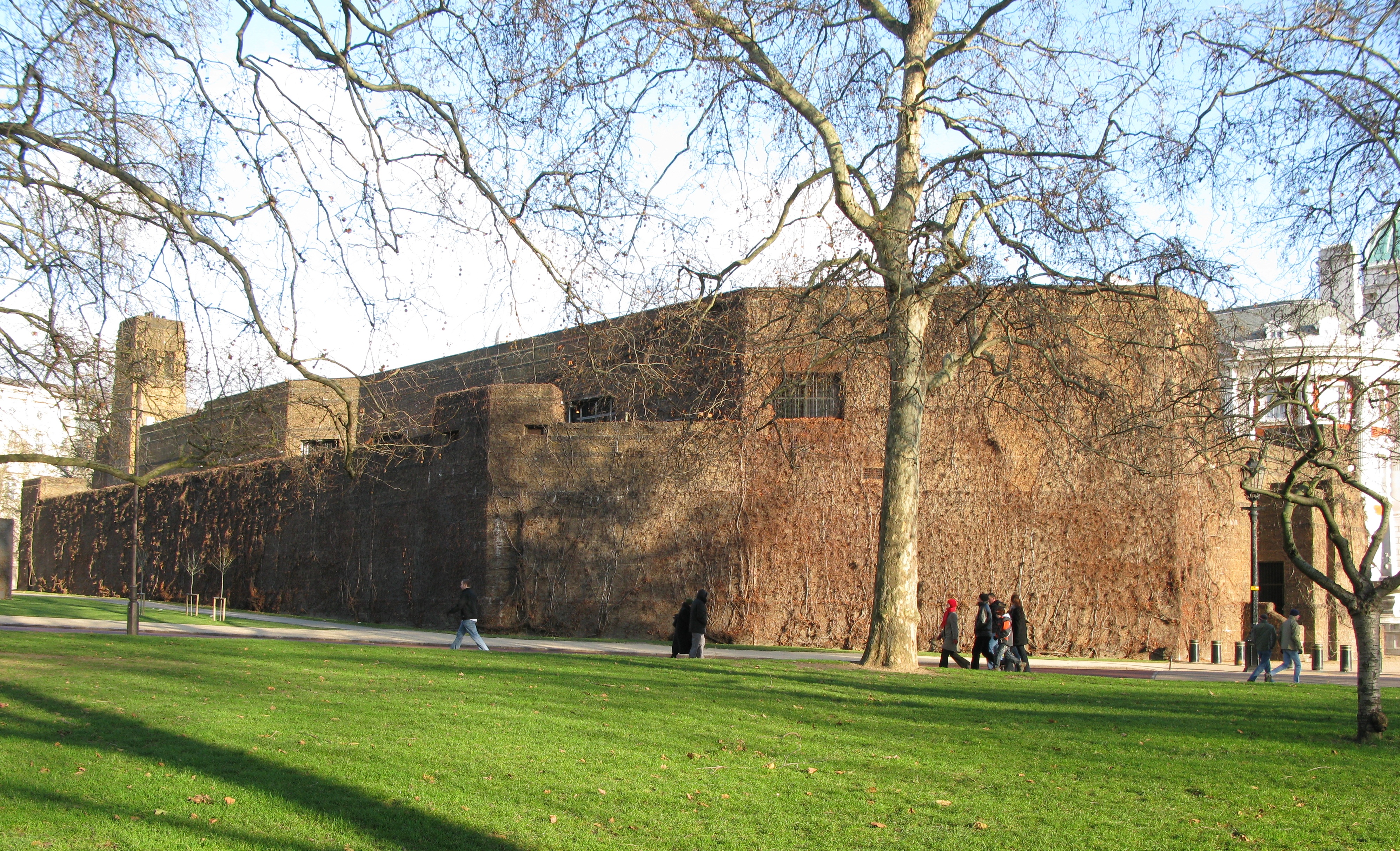 Some blockhouses like those constructed in England in 1940 were built in anticipation of a German invasion; they were often hexagonal in shape and were called " pillboxes". About 28,000 pillboxes and other hardened field fortifications were constructed, of which about 6,500 still survive.
Some blockhouses like those constructed in England in 1940 were built in anticipation of a German invasion; they were often hexagonal in shape and were called " pillboxes". About 28,000 pillboxes and other hardened field fortifications were constructed, of which about 6,500 still survive.
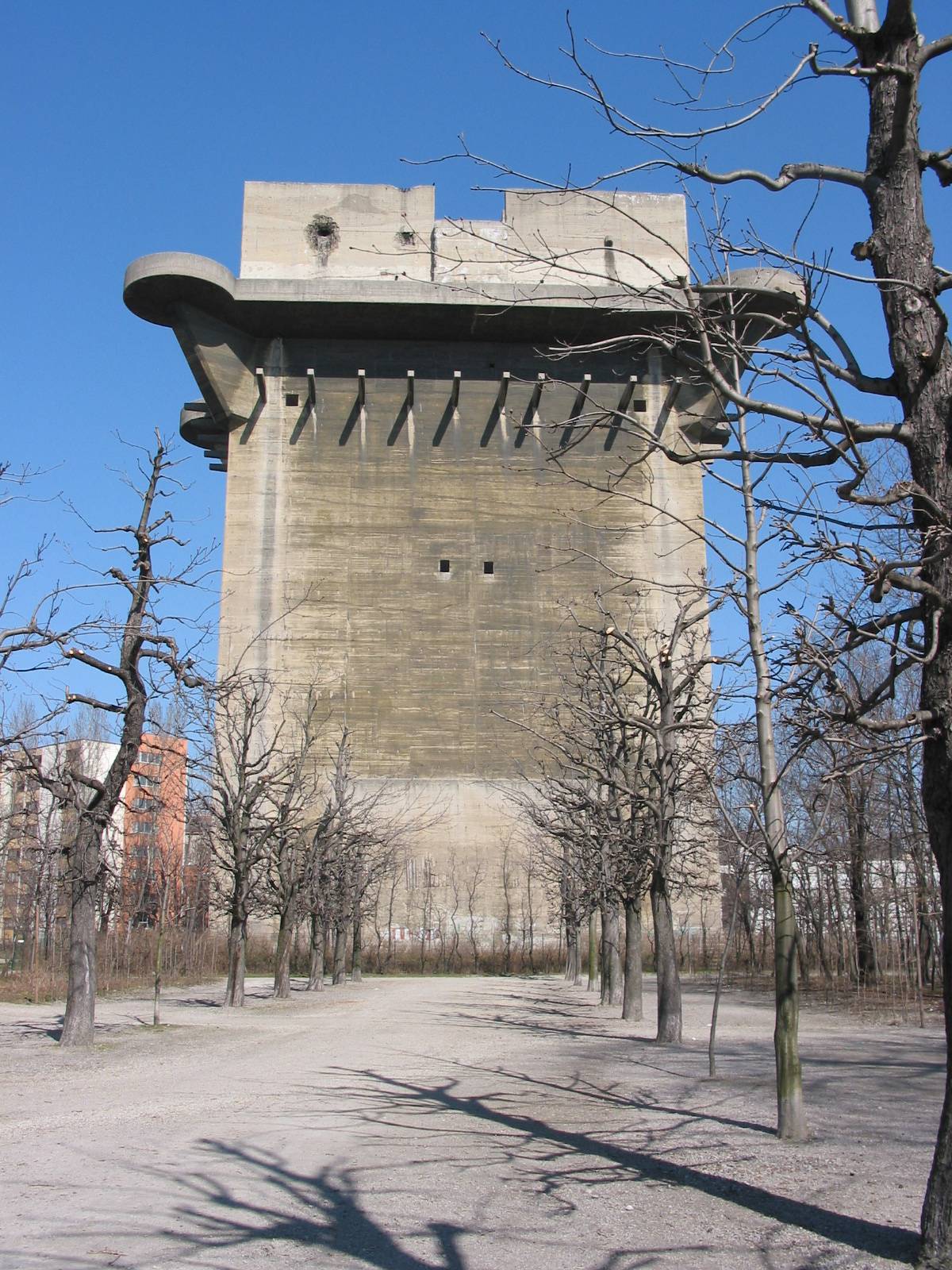 The
The
Pillbox Study Group
Blockhouses during the Anglo-Boer War (1899–1902)
British World War 2 Fortifications
The Fortress Study Group
{{Fortifications * Fortifications by type . Concrete buildings and structures Military science
 A blockhouse is a small fortification, usually consisting of one or more rooms with
A blockhouse is a small fortification, usually consisting of one or more rooms with loopholes
A loophole is an ambiguity or inadequacy in a system, such as a law or security, which can be used to circumvent or otherwise avoid the purpose, implied or explicitly stated, of the system.
Originally, the word meant an arrowslit, a narrow verti ...
, allowing its defenders to fire in various directions. It is usually an isolated fort in the form of a single building, serving as a defensive strong point against any enemy that does not possess siege equipment or, in modern times, artillery, air force and cruise missile
A cruise missile is a guided missile used against terrestrial or naval targets that remains in the atmosphere and flies the major portion of its flight path at approximately constant speed. Cruise missiles are designed to deliver a large warhe ...
s. A fortification intended to resist these weapons is more likely to qualify as a fortress
A fortification is a military construction or building designed for the defense of territories in warfare, and is also used to establish rule in a region during peacetime. The term is derived from Latin ''fortis'' ("strong") and ''facere'' ...
or a redoubt, or in modern times, be an underground bunker. However, a blockhouse may also refer to a room within a larger fortification, usually a battery or redoubt.
Etymology
The term ''blockhouse
A blockhouse is a small fortification, usually consisting of one or more rooms with loopholes, allowing its defenders to fire in various directions. It is usually an isolated fort in the form of a single building, serving as a defensive stro ...
'' is of uncertain origin, perhaps related to Middle Dutch ''blokhus
Blokhus is a village in North Jutland, Denmark. It is located in Jammerbugt Municipality. Blokhus is a popular beach town with around 1 million visitors every year.
History
Blokhus was originally named ''Hune Hvarre''. In the early 1600s there w ...
'' and 18th-century French '' blocus'' (blockade).
In ancient Greece
Blockhouses existed in ancient Greece, for example the one near Mycenae.Early blockhouses in England
 Early blockhouses were designed solely to protect a particular area by the use of artillery, and they had accommodation only for the short-term use of the garrison. The first known example is the
Early blockhouses were designed solely to protect a particular area by the use of artillery, and they had accommodation only for the short-term use of the garrison. The first known example is the Cow Tower, Norwich
The Cow Tower is an artillery tower by the River Wensum in Norwich, Norfolk, England. Built between 1398 and 1399 by the city authorities in response to the threat from France and indigenous English rebels, the tower was intended to defend th ...
, built in 1398, which was of brick and had three storeys with the upper storeys pierced for six guns each. The major period of construction was in the maritime defence programmes of Henry VIII
Henry VIII (28 June 149128 January 1547) was King of England from 22 April 1509 until his death in 1547. Henry is best known for his six marriages, and for his efforts to have his first marriage (to Catherine of Aragon) annulled. His disa ...
between 1539 and 1545. They were built to protect important maritime approaches such as the Thames Estuary, the Solent, and Plymouth
Plymouth () is a port city and unitary authority in South West England. It is located on the south coast of Devon, approximately south-west of Exeter and south-west of London. It is bordered by Cornwall to the west and south-west.
Plymouth ...
. Often sited in pairs, the blockhouses were not built to a common design, but usually consisted of a stone tower and bastion
A bastion or bulwark is a structure projecting outward from the curtain wall of a fortification, most commonly angular in shape and positioned at the corners of the fort. The fully developed bastion consists of two faces and two flanks, with fi ...
or gun platform, which could be semi-circular, rectangular or irregular in shape. The last blockhouse of this type was Cromwell's Castle, built in Scilly in 1651.
Coastal fortifications in Malta
 Blockhouses were an ubiquitous feature in Malta's coastal fortifications built in the 18th century by the
Blockhouses were an ubiquitous feature in Malta's coastal fortifications built in the 18th century by the Order of St. John
The Order of Knights of the Hospital of Saint John of Jerusalem ( la, Ordo Fratrum Hospitalis Sancti Ioannis Hierosolymitani), commonly known as the Knights Hospitaller (), was a medieval and early modern Catholic military order. It was headqu ...
. Between 1714 and 1716, dozens of batteries
Battery most often refers to:
* Electric battery, a device that provides electrical power
* Battery (crime), a crime involving unlawful physical contact
Battery may also refer to:
Energy source
*Automotive battery, a device to provide power t ...
and redoubts were built around the coasts of the Maltese Islands, while a few others were built in the subsequent decades. Almost every battery and redoubt had a blockhouse, which served as gun crew accommodation and a place to store munitions.
Many of the batteries consisted of a semi-circular or polygonal gun platform, with one or two blockhouses at the rear. The blockhouses usually had musketry loopholes, and in some cases were linked together by redans. Surviving batteries include Mistra Battery and Ferretti Battery
Ferretti Battery ( mt, Batterija ta' Ferretti), also known as Qajjenza Battery ( mt, Batterija tal-Qajjenza) or Saint George's Battery ( mt, Batterija ta' San Ġorġ), is an artillery battery in the village of Qajjenza, within the limits of Bir� ...
, which both have two blockhouses, and Saint Mary's Battery and Saint Anthony's Battery
Saint Anthony's Battery ( mt, Batterija ta' Sant'Antnin) is an artillery battery in Qala, Gozo, Malta. It was built by the Order of Saint John between 1731 and 1732 as one of a series of coastal fortifications around the coasts of the Maltese I ...
, which have a single blockhouse.
Many of the redoubts consisted of a pentagonal platform with a rectangular blockhouse at the rear, although a few had semi-circular or rectangular platforms. Surviving redoubts with blockhouses include Baħar iċ-Ċagħaq Redoubt and Briconet Redoubt, both of which have a pentagonal plan. A few of the redoubts consisted of a single tower-like blockhouse without a platform, and were known as ''tour-reduits''. Of the four ''tour-reduits'' that were built, only the Vendôme Tower survives today.
Age of exploration
Originally blockhouses were often constructed as part of a large plan, to "block" access to vital points in the scheme. But from the Age of Exploration to the nineteenth century standard patterns of blockhouses were constructed for defence in frontier areas, particularly South Africa, New Zealand, Canada, and the United States. Blockhouses may be made of masonry where available, but were commonly made from very heavy timbers, sometimes even logs arranged in the manner of alog cabin
A log cabin is a small log house, especially a less finished or less architecturally sophisticated structure. Log cabins have an ancient history in Europe, and in America are often associated with first generation home building by settlers.
Eur ...
. They were usually two or even three floors, with all storeys being provided with embrasures or loopholes, and the uppermost storey would be roofed. If the structure was of timber, usually the upper storey would project outward from the lower so the upper storey defenders could fire on enemies attacking the lower storey, or perhaps pour water on any fires. When the structure had only one storey, its loopholes were often placed close to the ceiling, with a bench lining the walls inside for defenders to stand on, so that attackers could not easily reach the loopholes.
 Blockhouses were normally entered via a sturdy, barred door at ground level. Most blockhouses were roughly square in plan, but some of the more elaborate ones were hexagonal or
Blockhouses were normally entered via a sturdy, barred door at ground level. Most blockhouses were roughly square in plan, but some of the more elaborate ones were hexagonal or octagon
In geometry, an octagon (from the Greek ὀκτάγωνον ''oktágōnon'', "eight angles") is an eight-sided polygon or 8-gon.
A '' regular octagon'' has Schläfli symbol and can also be constructed as a quasiregular truncated square, t, whi ...
al, to provide better all-around fire. In some cases, blockhouses became the basis for complete forts, by building a palisade
A palisade, sometimes called a stakewall or a paling, is typically a fence or defensive wall made from iron or wooden stakes, or tree trunks, and used as a defensive structure or enclosure. Palisades can form a stockade.
Etymology
''Palisade' ...
with the blockhouse at one corner, and possibly a second tower at the opposite corner. Many historical stone blockhouses have survived, and a few timber ones have been restored at historical sites. In New Zealand, the Cameron Blockhouse
The Cameron Blockhouse is a timber blockhouse in Wanganui, New Zealand, built during the New Zealand Wars in the mid-19th century. It is a rare surviving example of a privately constructed redoubt from that era.
John Cameron bought the property ...
, near Whanganui, is one of the few blockhouses to survive from the New Zealand Wars.
Second Boer War
Concrete blockhouses
During World War I and World War II, many types of blockhouses were built, when time allowed usually constructed ofreinforced concrete
Reinforced concrete (RC), also called reinforced cement concrete (RCC) and ferroconcrete, is a composite material in which concrete's relatively low tensile strength and ductility are compensated for by the inclusion of reinforcement having hig ...
. The major difference between a modern blockhouse and a bunker is that a bunker is constructed mostly below ground level while a blockhouse is constructed mostly above ground level.
 Some blockhouses like those constructed in England in 1940 were built in anticipation of a German invasion; they were often hexagonal in shape and were called " pillboxes". About 28,000 pillboxes and other hardened field fortifications were constructed, of which about 6,500 still survive.
Some blockhouses like those constructed in England in 1940 were built in anticipation of a German invasion; they were often hexagonal in shape and were called " pillboxes". About 28,000 pillboxes and other hardened field fortifications were constructed, of which about 6,500 still survive.
 The
The Admiralty Citadel
A number of military citadels are known to have been constructed underground in central London, dating mostly from the Second World War and the Cold War. Unlike traditional above-ground citadels, these sites are primarily secure centres for defen ...
in London is one of the sturdiest above-ground structures built during World War II. It was constructed in 1940–1941 as a bomb-proof operations centre for the Admiralty, with foundations nine metres deep and a concrete roof six metres thick. It too was intended to serve as a strongpoint in defending against the feared invasion.
In Berlin and other cities during World War II some massive blockhouses were built as air-raid shelters and anti-aircraft artillery
Anti-aircraft warfare, counter-air or air defence forces is the battlespace response to aerial warfare, defined by NATO as "all measures designed to nullify or reduce the effectiveness of hostile air action".AAP-6 It includes surface based, ...
platforms. They were called ''Hochbunker
Air raid shelters are structures for the protection of non-combatants as well as combatants against enemy attacks from the air. They are similar to bunkers in many regards, although they are not designed to defend against ground attack (but many ...
'' (literally, "high bunkers"; better translated as "above ground bunkers", to distinguish them from the usual deep i.e. underground air raid shelters) and those that functioned as anti-aircraft artillery platforms were also called Flak towers. Some were over six stories high; several survive to this day because of the high cost of demolition. The in Berlin- Schöneberg has a post-war block of flats built over it. During the Cold War
The Cold War is a term commonly used to refer to a period of geopolitical tension between the United States and the Soviet Union and their respective allies, the Western Bloc and the Eastern Bloc. The term '' cold war'' is used because the ...
the shelter was in use as a NATO foodstore.
In the guerrilla phase of the Irish Civil War (1922–1923), a network of blockhouses was constructed to protect the railways from guerrilla attacks.
Blockhouses and coordinated road systems were used in the encirclement campaigns
Encirclement campaigns (), officially called in Chinese Communist historiography as the Agrarian Revolutionary War were the campaigns launched by forces of the Chinese Nationalist Government against forces of the Chinese Communist Party during the ...
of Chiang Kai-shek
Chiang Kai-shek (31 October 1887 – 5 April 1975), also known as Chiang Chung-cheng and Jiang Jieshi, was a Chinese Nationalist politician, revolutionary, and military leader who served as the leader of the Republic of China (ROC) from 1928 ...
against the Chinese Communist Party.
See also
* Battery tower *Blockhouse No. 1
Blockhouse No. 1, colloquially known as The Blockhouse, is a small fort in the North Woods section of Central Park, Manhattan, New York City. Finished in 1814, the Blockhouse is the second-oldest structure in the park, after Cleopatra's Needle, ...
, New York City
* Block House (Delaware)
The Block House is a historic building located off Naamans Road in Claymont, Delaware. The Block House is believed to be the only structure remaining of original settlement on Naamans Creek.
History
The Block House is believed to have been const ...
* British hardened field defences of World War II - Pillbox
* Caponier
* Casemate
A casemate is a fortified gun emplacement or armored structure from which artillery, guns are fired, in a fortification, warship, or armoured fighting vehicle.Webster's New Collegiate Dictionary
When referring to Ancient history, antiquity, th ...
* Chartaque
* Chardak
A chardak (Bulgarian, Macedonian and sr, чардак, italics=no, ''čardak'') is an old typical house in the Balkans
The Balkans ( ), also known as the Balkan Peninsula, is a geographical area in southeastern Europe with various g ...
* Fort King George in Darien, Georgia
* Fort Pitt Block House in Point State Park in Pittsburgh
* Martello tower
* Ostrog (fortress)
* Sangar (fortification)
Notes
References
* * *External links
Pillbox Study Group
Blockhouses during the Anglo-Boer War (1899–1902)
British World War 2 Fortifications
The Fortress Study Group
{{Fortifications * Fortifications by type . Concrete buildings and structures Military science